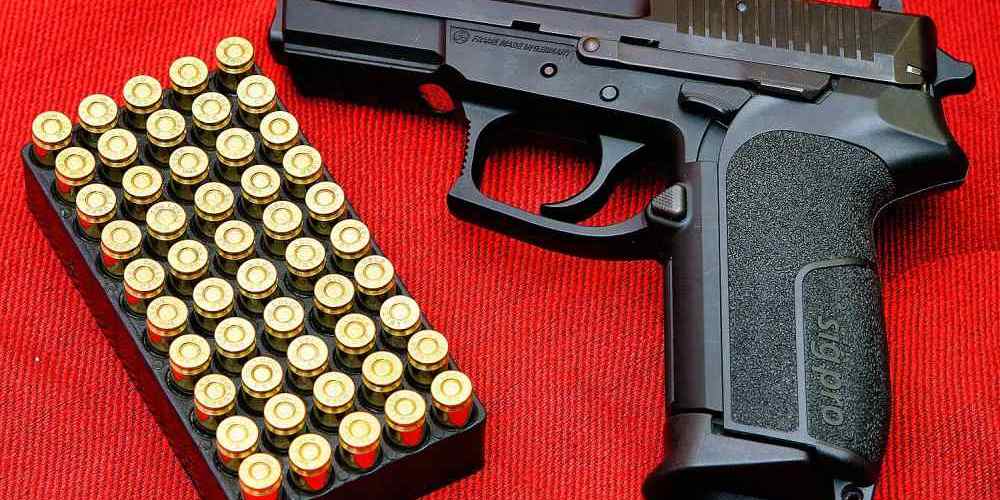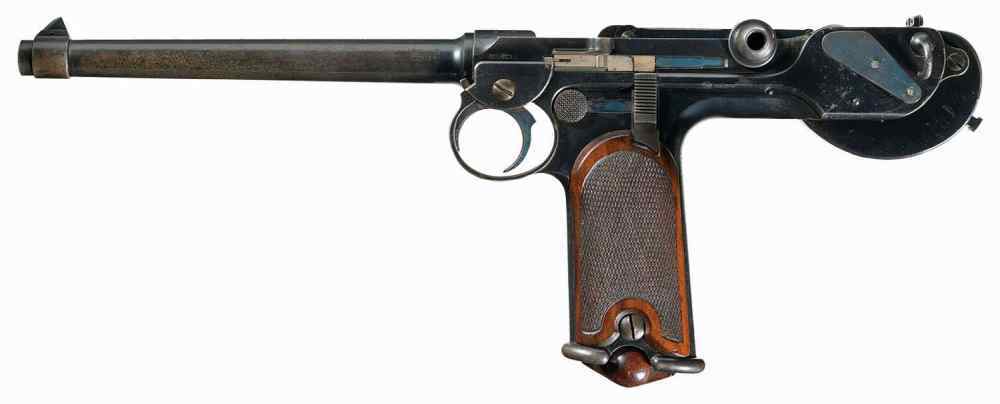“Master Your Aim, Control the Game: Elevate Your Defense with Real-World Pistol Training Scenarios”
Mastering the Fundamentals: Essential Semi-Auto Pistol Drills
Defensive Drills: Practical Semi-Auto Pistol Training Scenarios
Mastering the fundamentals of semi-auto pistol handling is a cornerstone of responsible firearm ownership and effective self-defense. To ensure proficiency, regular practice through a variety of defensive drills is essential. These drills not only hone your shooting skills but also prepare you for real-world scenarios where quick thinking and muscle memory can make all the difference. One of the most fundamental exercises is the dry fire drill. This involves practicing your trigger pull without live ammunition, allowing you to focus on form and technique without the distraction of recoil. By repeatedly drawing your firearm, aligning your sights, and smoothly pulling the trigger, you build the muscle memory needed for precise shooting. It’s crucial to ensure your pistol is unloaded and pointed in a safe direction during these exercises. Transitioning from dry fire drills, incorporating live fire exercises at the range is the next step. Start with static shooting to get comfortable with the recoil and noise of your firearm. As you progress, incorporate shooting from various distances to simulate different defensive scenarios. Begin at close range, typically within seven yards, as most defensive encounters occur at this distance. Gradually increase the distance to challenge your accuracy and adaptability. To add complexity, practice shooting from cover. This drill teaches you to effectively use your environment for protection while engaging targets. Use range barricades or other objects to simulate cover, and practice shooting from different positions, such as kneeling or crouching. This not only improves your shooting skills but also your tactical thinking. Another critical drill is the failure drill, also known as the “Mozambique Drill.” This exercise trains you to respond to a situation where your initial shots may not stop the threat. The drill involves firing two shots to the body and one to the head of the target, teaching you to quickly adjust your aim for a more effective shot if necessary. This drill emphasizes the importance of shot placement and the reality that not all threats are neutralized with a single shot. Magazine changes are an often-overlooked aspect of semi-auto pistol training. In a defensive situation, you may need to reload quickly. Practice both tactical reloads, where you retain the partially used magazine, and emergency reloads, where you drop the empty magazine to reload as fast as possible. Speed and efficiency are key, so this drill should be repeated until the motions are second nature. Moving while shooting is a more advanced drill that simulates the dynamic nature of a defensive encounter. Engage targets while moving laterally, forward, or backward. This not only improves your ability to shoot under stress but also your footwork and balance. Remember, in a real-life situation, you’re unlikely to be standing still, so training for movement is vital. Finally, stress inoculation drills can help prepare you for the physiological effects of a high-stress encounter. Incorporate timed drills, shoot/no-shoot scenarios, or training with distractions to simulate stress. The goal is to learn to control your breathing, maintain focus, and execute your skills under pressure. In conclusion, mastering the fundamentals of semi-auto pistol handling through practical defensive drills is essential for effective self-defense. By starting with dry fire exercises and progressing to more complex scenarios, you can build the confidence and competence needed to handle your firearm safely and effectively. Regular practice of these drills will ensure that if you ever need to use your pistol in defense, you’ll be prepared to do so with skill and precision.
Dynamic Shooting Drills for Real-World Self-Defense
Defensive Drills: Practical Semi-Auto Pistol Training Scenarios
When it comes to self-defense, proficiency with a semi-automatic pistol can be a lifesaver. However, achieving a level of comfort and skill with your firearm that can make a difference in a high-stress situation requires more than just static target practice. Dynamic shooting drills that simulate real-world scenarios are essential for developing the quick thinking and muscle memory needed to respond effectively in a defensive situation. One of the foundational drills for enhancing your defensive shooting skills is the “Draw and Shoot” exercise. This drill focuses on the critical moments of recognizing a threat, drawing your weapon, and accurately firing. Begin by standing at a comfortable distance from your target, with your pistol holstered. On a signal, draw your firearm and fire two shots at the center mass of the target. The goal is to perform this smoothly and quickly, without sacrificing accuracy. As you become more proficient, you can increase the challenge by adding movement, drawing from concealment, or introducing a timer to push your speed. Transitioning seamlessly, the “Move and Shoot” drill takes the skills from the previous exercise and adds the element of motion. In a real-world encounter, being a stationary target can increase your risk. This drill involves moving laterally or diagonally while engaging your target. Start by taking a step to the side as you draw your weapon and then fire at the target while continuing to move. This not only helps improve your shooting accuracy while in motion but also trains you to be a harder target to hit. Another critical aspect of defensive shooting is the ability to quickly assess multiple threats. The “Multiple Target Engagement” drill helps develop situational awareness and target prioritization. Set up several targets at varying distances and angles. Upon the start signal, identify and engage each target with two shots, working on transitioning smoothly from one target to the next. This drill reinforces the importance of scanning your environment and not tunneling in on a single threat. In a defensive scenario, you may not always have the luxury of a perfect shooting stance. The “Unconventional Positions” drill prepares you for the unexpected. Practice shooting from kneeling, sitting, or prone positions, as well as from behind cover. These positions can provide stability and protection in a real encounter. Focus on quickly getting into position, acquiring your target, and accurately firing. Lastly, the “Reload Under Stress” drill is vital for handling one of the most vulnerable moments in a gunfight: when your weapon runs dry. Start with a limited number of rounds in your magazine to force a reload during the drill. Engage your targets until you run out of ammunition, perform a quick reload, and continue firing. This drill hones your ability to reload efficiently and gets you back in the fight with minimal downtime. Incorporating these dynamic shooting drills into your training regimen will significantly enhance your defensive shooting capabilities. Remember, the key to success in any defensive situation is not just marksmanship but also the ability to think and act under pressure. Regular practice of these practical semi-auto pistol training scenarios will build the confidence and skills necessary to protect yourself and others when it matters most. Always prioritize safety, use proper equipment, and if possible, seek professional instruction to ensure you’re training effectively and responsibly.
Building Speed and Accuracy: Advanced Pistol Techniques
Defensive Drills: Practical Semi-Auto Pistol Training Scenarios
Building speed and accuracy with a semi-automatic pistol is a critical aspect of defensive firearms training. To effectively protect oneself in a life-threatening situation, it is essential to have not only the foundational skills but also advanced techniques that can be honed through practical training scenarios. These drills are designed to simulate real-world situations, allowing shooters to develop muscle memory, quick decision-making abilities, and precision under pressure. One of the most effective ways to build speed is by practicing the draw. The ability to quickly and safely draw your pistol from its holster is paramount. Start by standing with your hands at a natural resting position. On a signal, draw your pistol and fire two shots at a target positioned at a close range, typically within 7 yards. The goal is to reduce the time it takes to draw and fire accurately. As proficiency increases, incorporate movement, drawing while stepping to the side, to simulate evading an attacker. Transitioning smoothly, let’s consider the importance of accuracy. A common drill to enhance precision is the “Ball and Dummy” exercise. This involves mixing dummy rounds with live ammunition in your magazine. When you encounter a dummy round, the hammer falls with no discharge, revealing any flinching or anticipation of recoil. This immediate feedback allows you to correct your technique on the spot. Over time, this drill helps in developing a smooth trigger pull and maintaining sight alignment throughout the firing process. Moreover, engaging multiple targets is a reality in defensive scenarios. The “El Presidente” drill is a classic exercise that addresses this need. It involves two key components: speed and accuracy while engaging several targets. Set up three targets side by side, each a few feet apart. Start with your back to the targets, and on the signal, turn, draw, and fire two shots at each target, perform a magazine change, then fire two more shots at each target again. This drill not only improves target transition and shooting speed but also reinforces the skill of reloading under stress. Another advanced technique is shooting while moving. In a real confrontation, being a stationary target can be dangerous. Practice firing while walking towards, away from, and laterally across the range to your targets. This not only builds the ability to shoot accurately while in motion but also enhances balance and coordination. Begin at a slow pace, focusing on maintaining proper sight picture and trigger control, then gradually increase your speed as your skills improve. Lastly, stress inoculation is a critical component of defensive training. To simulate the high-stress environment of a defensive situation, incorporate timed drills or shoot/no-shoot scenarios where decision-making is key. Use a shot timer to add pressure, aiming to improve your reaction time with each session. Introduce variables such as low-light conditions or shoot house courses that require quick navigation and target identification. In conclusion, advanced pistol techniques are an essential part of a comprehensive defensive training regimen. By incorporating drills that focus on speed, accuracy, multi-target engagement, movement, and stress management, shooters can significantly enhance their defensive capabilities. Remember, the goal is not just to shoot faster or more accurately, but to do both effectively under the kind of pressure that mimics a real-life encounter. With consistent practice and dedication to these practical semi-auto pistol training scenarios, you can build the confidence and skills necessary to defend yourself effectively should the need arise.
Scenario-Based Training: Preparing for the Unexpected
Defensive Drills: Practical Semi-Auto Pistol Training Scenarios
Scenario-based training is a critical component of firearms proficiency, especially when it comes to the use of semi-automatic pistols for self-defense. This method of training prepares individuals for the unexpected by simulating real-world situations that require quick thinking, decisive action, and effective marksmanship. By engaging in practical semi-auto pistol training scenarios, shooters can develop the skills necessary to respond effectively to potential threats. One of the foundational elements of scenario-based training is the emphasis on situational awareness. This involves being cognizant of one’s surroundings and identifying potential threats before they escalate. A practical drill to enhance this skill is the “360-degree scan” exercise. After engaging a target, the shooter must quickly scan their environment in all directions. This drill reinforces the habit of checking for additional threats and ensures that the shooter does not tunnel-vision on a single target. Transitioning smoothly from situational awareness, another key aspect of defensive training is mastering the draw. The ability to quickly and safely draw one’s pistol from a holster is paramount in a defensive situation. A common drill for this is the “draw and fire” scenario, where the shooter practices drawing their weapon and firing a controlled pair of shots at a target. This drill can be varied by introducing a verbal command or a physical stimulus, such as a buzzer, to initiate the draw, thereby adding an element of surprise akin to real-life encounters. Moreover, effective communication during a defensive situation can be as crucial as marksmanship. To incorporate this into training, shooters can work with partners in role-playing exercises. One person acts as a bystander or a potential threat, while the other practices issuing commands and controlling the situation verbally. This drill not only improves communication skills but also helps shooters maintain composure and assertiveness under stress. Moving on, managing recoil is another technical skill that is vital for maintaining accuracy and follow-up shot speed. A practical drill for this is the “cadence fire” exercise, where the shooter fires at a target in rapid succession, focusing on controlling the pistol’s recoil and returning to the target as quickly as possible. This drill helps shooters find the balance between speed and precision, which is essential when multiple shots are required to stop a threat. Furthermore, in a real defensive scenario, the luxury of a static shooting position is rare. Therefore, incorporating movement into training is essential. Drills such as “shoot and move” require the shooter to engage targets while advancing, retreating, or moving laterally. This not only improves the shooter’s ability to hit targets while on the move but also reinforces the tactical advantage of not remaining in one place during a potential gunfight. Lastly, it’s important to remember that defensive encounters often occur in less-than-ideal lighting conditions. To prepare for this, low-light or no-light training scenarios should be included. Using a flashlight or a weapon-mounted light, shooters can practice identifying targets and making accurate shots in darkness. This type of training is invaluable, as it familiarizes shooters with the unique challenges posed by low visibility environments. In conclusion, scenario-based training with semi-automatic pistols is an effective way to prepare for the unexpected. By focusing on situational awareness, drawing techniques, communication, recoil management, movement, and low-light conditions, shooters can develop a well-rounded skill set that will serve them well in defensive situations. Remember, the goal of these drills is not just to shoot accurately but to think tactically and act decisively when it matters most.

Low-Light Defensive Tactics with a Semi-Auto Pistol
Defensive Drills: Practical Semi-Auto Pistol Training Scenarios
In the realm of personal defense, proficiency with a semi-automatic pistol can be a lifesaver. However, real-world encounters rarely happen in broad daylight or under ideal conditions. Low-light situations are common, and preparing for them requires specific training. By incorporating low-light defensive tactics into your practice regimen, you can significantly enhance your readiness for nighttime or dimly lit scenarios. To begin, understanding the unique challenges of low-light environments is crucial. Visibility is reduced, making target identification and acquisition more difficult. Additionally, the glare from your muzzle flash can be disorienting, and the shadows can play tricks on your perception. Therefore, the first step in low-light training is to familiarize yourself with these conditions. This can be achieved by practicing in a controlled environment with the lights dimmed or during twilight hours. Once you’re accustomed to the reduced visibility, it’s time to integrate specific drills that simulate potential defensive situations. One effective drill is the flashlight integration exercise. Since you may need to identify a threat before engaging, learning to handle a flashlight in conjunction with your pistol is essential. Practice holding the flashlight in various positions, such as the Harries technique or the FBI method, which allow you to illuminate the target while maintaining a proper grip on your firearm. Transition smoothly between using the flashlight to search and moving into a shooting stance, ensuring that you can do so without fumbling or losing sight of your target. Another vital component of low-light training is working with your pistol’s sights. Many modern semi-auto pistols come equipped with night sights, which are designed to be visible in low-light conditions. Spend time aligning these sights in dim conditions to build muscle memory. If your pistol doesn’t have night sights, consider upgrading or at least practicing so you can quickly and accurately align your sights by feel. Stress inoculation is also a key aspect of realistic defensive training. In a high-pressure situation, your heart rate will soar, and fine motor skills will deteriorate. To simulate this, incorporate physical exertion into your drills. Perform a series of push-ups or sprints before engaging targets to elevate your heart rate. This will help you learn to control your breathing and maintain focus even when your body is under stress. Moving and shooting is another critical skill for low-light defense. An assailant is unlikely to stand still, so you must be adept at hitting a moving target and moving yourself to avoid being an easy target. Set up a drill that requires you to move laterally or use cover while engaging targets. This not only improves your shooting accuracy while in motion but also reinforces the importance of situational awareness. Lastly, scenario-based training can tie all these elements together. Create realistic scenarios that force you to make split-second decisions. Use role players or reactive targets to simulate an assailant, and incorporate verbal commands and decision-making into your drills. This type of training helps you to recognize threats, communicate effectively, and respond appropriately—all within the context of a low-light environment. In conclusion, low-light defensive tactics with a semi-auto pistol are an indispensable part of any comprehensive training program. By focusing on flashlight techniques, sight alignment, stress inoculation, dynamic movement, and scenario-based exercises, you can build the skills necessary to defend yourself effectively when the lights go down. Remember, the key to success in any defensive situation is preparation, and with these drills, you’ll be better equipped to handle the unexpected challenges of low-light encounters.




